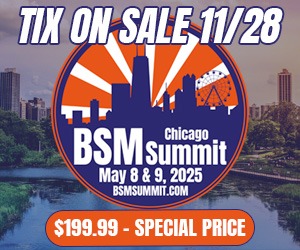It’s often difficult to step back, analyze, and think about the big picture when you operate a brand. So much of what we do revolves around day to day business. But with 2016 looming, there’s no better time than now to review your brand’s strengths and weaknesses and think about what you need to do to stay ahead of the curve with the audience.
Many times I’ve stated that I believe the sports format’s ability to attract larger revenues and showcase its overall impact and success will come from presenting an impressive total reach story. Listeners want content available on demand across multiple platforms and advertisers want to know their messaging is reaching the largest potential audience with the goal being to show an increase in profits. A monthly radio ratings report is nice but when the companies paying for the service don’t believe in its accuracy, how can you expect a paying client to do so?
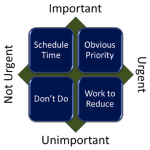 While it can be daunting and feel impossible to pull off due to the workload involved, a brand has to deliver great content consistently across multiple platforms to matter. 30 years ago success started with a powerful signal and being the first in a market to experiment with sports talk.
While it can be daunting and feel impossible to pull off due to the workload involved, a brand has to deliver great content consistently across multiple platforms to matter. 30 years ago success started with a powerful signal and being the first in a market to experiment with sports talk.
Today, you better have a good radio signal, on-air talent who appeal to the audience, content that is timely, topical, and better than the competition’s, social media accounts that are active and engaging with listeners, and a great website with exclusive audio, video and written content.
As established and respected as some brands are, they can all be beaten. Audiences today care about the content experience more than they care about which brand provided it. Loyalty isn’t given based on reputation but rather from demonstrating a consistent ability to provide the user with something of value. For each person who tells me a brand is unbeatable, I remind them of the previous importance placed on newspapers, landline telephones and CD’s and cassettes.
Today’s audience consumes content in numerous ways. The same individual who spends 30-60 minutes per day with your station while sitting in their car, is the same person who is at home engaging with your brand on social media and downloading podcasts on your website. In the old days of ratings, this person was unavailable once they left their automobile. Now, they are always accessible.
The question is, are you creating enough buzz for your brand beyond what people hear over the airwaves? Are you equipped with a strong multi-platform strategy? Is it understood, embraced and carried out by your staff?
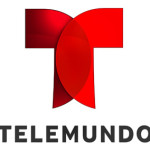 I came across a piece on Digiday about the television network Telemundo. During the past year, the channel has experienced incredible growth.
I came across a piece on Digiday about the television network Telemundo. During the past year, the channel has experienced incredible growth.
First, they tripled their audience on YouTube. The channel crossed the 1 million subscriber mark during the Thanksgiving holiday and have added more than 613,000 subscribers this year between January 1 and October 31.
During that same period, the channel also generated 460 million views (up 262 percent from the previous year) and more than 3.1 billion minutes in watch time (up 278 percent).
Ask yourself this, does your sports radio station have a video strategy for YouTube or Facebook? I’ve seen some brands like WEEI, KNBR, 790 The Ticket and 101 ESPN do a good job with video but they are the exception not the rule. Some stations don’t even have a video channel created. In today’s technology savvy world, how is that possible?
And let me be clear, I’m not referring to the occasional situation when a producer pulls out their phone to record a guest in-studio or when you create a custom feature for a client that is built exclusively for the video channel. Those are parts of a strategy. Unless there’s a consistent plan with an understanding of why it matters and how it can lead to more non-traditional revenue and brand growth, then you’ve got little chance to be effective.
Consider this, 1.3 billion people use YouTube to watch nearly 5 billion videos per day. The average time spent per user on the website is forty minutes. That amount of time per day is equal to many radio show’s daily time spent listening. And that’s only YouTube – with Facebook now involved in the video arena that number jumps even higher.
Three years ago, Telemundo’s digital and social teams operated independent of each other (doesn’t that sound familiar radio folks?). It was then that the network decided to merge both teams under its Telemundo Studios division. The task was to figure out how each show should be presented and promoted on each platform.
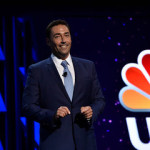 Peter Blacker, EVP of Digital Media and Emerging Businesses at NBC Universal Telemundo Enterprises said “Every single one of my programming people has to be thinking about all of these platforms. We need to be where our audience is. A fan of one of these shows is going to spend a certain amount of time on YouTube, Facebook and other social platforms, and the fact is that they want different things in each of those areas. The good thing is we make so many hours of content that we have this enormous engine to feed it.”
Peter Blacker, EVP of Digital Media and Emerging Businesses at NBC Universal Telemundo Enterprises said “Every single one of my programming people has to be thinking about all of these platforms. We need to be where our audience is. A fan of one of these shows is going to spend a certain amount of time on YouTube, Facebook and other social platforms, and the fact is that they want different things in each of those areas. The good thing is we make so many hours of content that we have this enormous engine to feed it.”
That strategy has led the company to growth beyond YouTube too. From January 1st to October 31st, all channels combined to add 1.1 million subscribers, 761 million views and 4.58 billion minutes of watch time.
On Facebook, Telemundo’s main account has over 7 million fans (57 million fans across all shows) and the network is also experimenting with video. They have partnered with Facebook to generate interest for upcoming programming. The network will either release preview clips or sometimes even full episodes of a show.
Telemundo also has 6 million Twitter followers, 3 million on Instagram and 67,000 on Vine. All of those platforms are also in play for video and other forms of social content.
I have seen more sports radio stations doing a better job at committing to being active and topical on social platforms but there is still work to be done. Today for example, I witnessed three major market stations not even post one item on Facebook before 10am. Considering that the audience wakes up every day and checks their Facebook account, it’s a missed opportunity to present content for people to engage with and remind them of why to tune in to the radio station or visit the website.
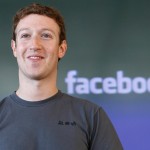 Many stations gravitate to Twitter, and while I love the platform myself and value the way content can be shared on it, Facebook still dominates the total audience picture. King Zuckerberg’s company delivers 5x the audience that Twitter does. If you look at the amount of re-tweets or comments that a sports station gets on Twitter, it fails in comparison to the activity seen on Facebook.
Many stations gravitate to Twitter, and while I love the platform myself and value the way content can be shared on it, Facebook still dominates the total audience picture. King Zuckerberg’s company delivers 5x the audience that Twitter does. If you look at the amount of re-tweets or comments that a sports station gets on Twitter, it fails in comparison to the activity seen on Facebook.
I’m not suggesting that stations focus less on Twitter. I’m simply stating that Facebook needs to be a much bigger priority consistently. Often we become tired of things and search for the next cool trend and while Facebook has lost some of its luster, it still occupies 1 out of every 5 minutes that an individual spends with their phone. That’s an area where you want your brand to be present so you can re-direct the audience to your programming.
What we share on social outlets is also important. Your content should be topical and promoted regularly. Anytime you can use a tease to create suspense, that’s recommended.
For example, you could type a headline that says “Kobe Bryant has announced he’s retiring” and you’ll probably get a click on it. But if the link said “Kobe Bryant’s retiring but not before addressing one key issue” it’s more likely to pull someone in.
As stations have internal dialogue about ways to grow in the future, digital and social expansion should be front and center in every market discussion. The audience is ahead of where many of our brands are and in some cases, our staffs. You can pretend things will slow down and we’ll catch up, but as we’ve seen too many times, by the time we fix this issue, there will be a newer challenge ahead of us that we’re also not prepared for.
 Forward thinkers are assets and this format has many of them but it needs many more. Having the ability now to step back and examine things from the outside looking in, we miss too many opportunities to highlight our content and people. You can’t just promote things 1x per week or 1x per month, you have to do it daily. You also need to identify what great content looks and sounds like and focus on the different ways to get it in front of the audience.
Forward thinkers are assets and this format has many of them but it needs many more. Having the ability now to step back and examine things from the outside looking in, we miss too many opportunities to highlight our content and people. You can’t just promote things 1x per week or 1x per month, you have to do it daily. You also need to identify what great content looks and sounds like and focus on the different ways to get it in front of the audience.
In some markets, stations will spend a few hundred thousand dollars on creating a TV commercial and pushing it across local television stations for 13 weeks rather than hire a dedicated video producer year round to create daily content and expand the station’s entire digital and social footprint. That in my opinion makes little business sense. It’s the old way of doing business – run the TV commercial to boost awareness and hope that it leads to recall so the radio station gets a few tune ins to drive an increase in ratings.
Except there’s one big issue with that approach – the audience consumes your programming differently and advertisers have adjusted the way they invest their money. They also happen to spend more online than on radio and that’s expected to increase even more by 2019.
What all of this amounts to is this; a lot more work, a lot more creativity, a lot more strategic planning, a bigger challenge for programming staffs, a bigger commitment from companies in the digital/social space, a deeper connection with the audience across multiple channels, and a lot more revenue!
Although it may be taxing at times and require more of an investment than some may want to make, it’s too important to not be where the audience and business community is. As Telemundo has demonstrated, when you bring a group together and share a unified vision and commitment, the growth follows. And that’s the secret sauce that makes the meal taste a whole lot better!
Crunching The Numbers:
- 610 Sports in Kansas City smashed its November ratings book. The station finished #1 overall with ALL listeners 6+ (think the Royals World Series games might have helped?). The station delivered a 10.6 for the month which was nearly 5 points higher than its October book and a full 3 points ahead of the market’s second highest rated brand 101 The Fox. Congrats to John Hanson and his team on an amazing month.
- 980 The Beast in Los Angeles recorded its best month in station history. Morning Drive jumped from 0.7 in October to 1.5 in November. Middays climbed from a 0.3 in October to a 0.6 in November and Afternoons grew from 0.7 in October to 1.0 in November. With the station making lineup changes recently, the early returns are positive.
Under The Radar:
- Congrats is in order for Adam Kuperstein who has returned to the Miami airwaves. The former WQAM midday host is now hosting Part-Time for 790 The Ticket.
- An additional congratulations goes out to Eric “Love Stain” Reiser who’s joined 92.3 The Fan in Cleveland as a Producer.
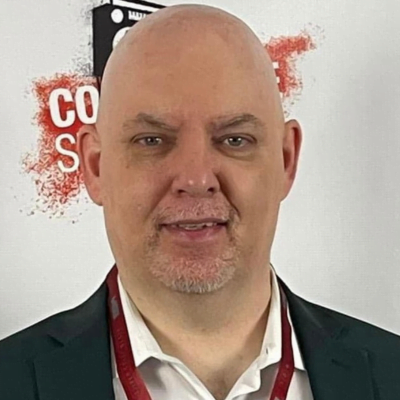
Jason Barrett is the President and Founder of Barrett Media since the company was created in September 2015. Prior to its arrival, JB served as a sports radio programmer, launching brands such as 95.7 The Game in San Francisco, and 101 ESPN in St. Louis. He also spent time programming SportsTalk 950 in Philadelphia, 590 The Fan KFNS in St. Louis, and ESPN 1340/1390 in Poughkeepsie, NY. Jason also worked on-air and behind the scenes in local radio at 101.5 WPDH, WTBQ 1110AM, and WPYX 106.5. He also spent two years on the national stage, producing radio shows for ESPN Radio in Bristol, CT. Among them included the Dan Patrick Show, and GameNight.
You can find JB on Twitter @SportsRadioPD. He’s also reachable by email at Jason@BarrettMedia.com.




